Solo exhibition:
ID: E18.1
Title:
Sergey Shabohin:
18 / Practices of Subordination

Private tours*:
* the exhibition haven’t officially opened due to the ban to hold public events in the space
June 1 — July 1, 2018
Installation of the exhibition lasted 11.04 – 31.05.2018
June 1 — July 1, 2018
Installation of the exhibition lasted 11.04 – 31.05.2018
Place:
Canteen XYZ, Minsk, Belarus
Cycle:
Curator:
Anna Loktionova
Artist:
Sergey Shabohin
The tour is accompanied by embedded timeline (presented as a slideshow), a fragment of the animated map and the videos from all the 18 screens in its whole duration
Virtual 360° tour
by atmasfera.by
Curatorial statement:
Today, during the economic downturn and the «cultural thaw» in Belarus, an external observer could get an image of the rapid development of local initiatives and. But the Belarusian context remains the same — independent spaces and initiatives are being shut down, raids and detentions of activists and businessmen are being carried out, and bulling of the representatives of certain groups is legitimized. One can see a game field with indefinite rules, the border that you do not see, and you can only try to feel, hoping for luck. This uncertainty causes a distinct fear, driving you back to a familiar safe territory.
The exhibition of Sergey Shabohin: 18 / Practices of Subordination was to open on April 18. The Canteen XYZ gallery was shut down right before DOTYK queer festival which was supposed to take place there. Currently the space is still closed to the general public*.
The management of the place still does not have any documents that legitimize this process. Therefore, the opening of the exhibition will not take place. Our reaction to everything that is happening is the documentation and post-publication of the collected materials, as well as the attempts to demonstrate the exhibition to those who want to see it.
The project is exhibited in the former factory kitchen in Minsk. The organizers of Canteen XYZ gallery in their attempt to create a space of emancipation fell into the trap of an exhausting Soviet mechanism, with constant checks and «normalizing» ideology. Sergey Shabohin’s project perfectly firs into the context of the power which is degrading and therefore is passive-aggressive to critical interventions.
The exhibition is the author’s museum of objects of fear, consisting of 18 parts. The artist created a temporary space for active travel through and careful study of personal barriers and mechanisms of power. Sergey Shabohin examines the processes of birth — functioning and decline in terms of concepts of corporeality, urbanism and political ideologies. The author doesn’t take the role of a teacher, but a guide who is offering you to «listen and think» the project through the prism of personal stories and state myths.
The project 18 / Practices of Subordination in Canteen XYZ is currently presented in the fullest form. Especially for the exhibition, a system of 18 boards-storages of the author’s archive was developed; new objects and video works were prepared; the exposition itself is so organically inscribed in the specifics of the place that it makes it a total installation.
Curator of the exhibition: Anna Loktionova
The exhibition of Sergey Shabohin: 18 / Practices of Subordination was to open on April 18. The Canteen XYZ gallery was shut down right before DOTYK queer festival which was supposed to take place there. Currently the space is still closed to the general public*.
The management of the place still does not have any documents that legitimize this process. Therefore, the opening of the exhibition will not take place. Our reaction to everything that is happening is the documentation and post-publication of the collected materials, as well as the attempts to demonstrate the exhibition to those who want to see it.
The project is exhibited in the former factory kitchen in Minsk. The organizers of Canteen XYZ gallery in their attempt to create a space of emancipation fell into the trap of an exhausting Soviet mechanism, with constant checks and «normalizing» ideology. Sergey Shabohin’s project perfectly firs into the context of the power which is degrading and therefore is passive-aggressive to critical interventions.
The exhibition is the author’s museum of objects of fear, consisting of 18 parts. The artist created a temporary space for active travel through and careful study of personal barriers and mechanisms of power. Sergey Shabohin examines the processes of birth — functioning and decline in terms of concepts of corporeality, urbanism and political ideologies. The author doesn’t take the role of a teacher, but a guide who is offering you to «listen and think» the project through the prism of personal stories and state myths.
The project 18 / Practices of Subordination in Canteen XYZ is currently presented in the fullest form. Especially for the exhibition, a system of 18 boards-storages of the author’s archive was developed; new objects and video works were prepared; the exposition itself is so organically inscribed in the specifics of the place that it makes it a total installation.
Curator of the exhibition: Anna Loktionova
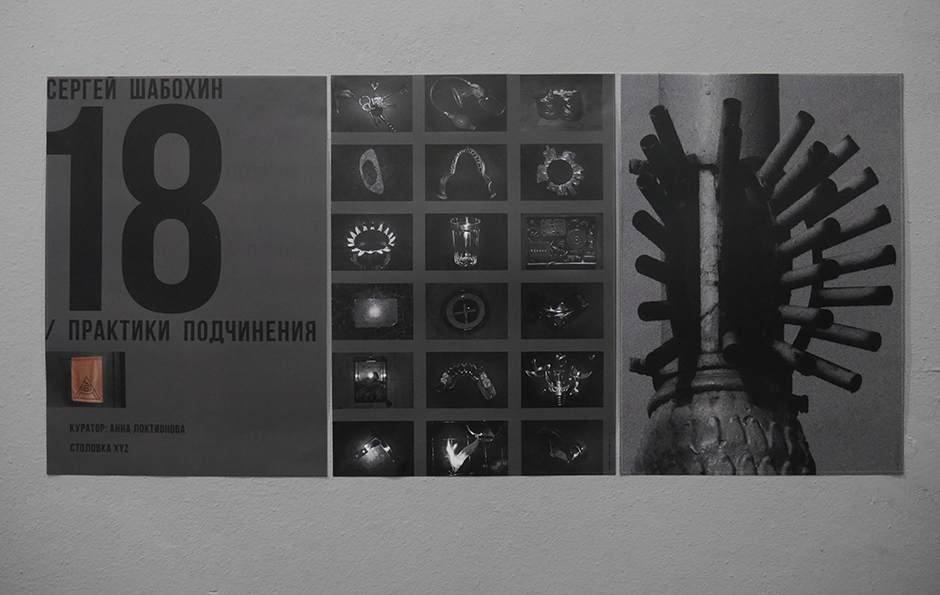
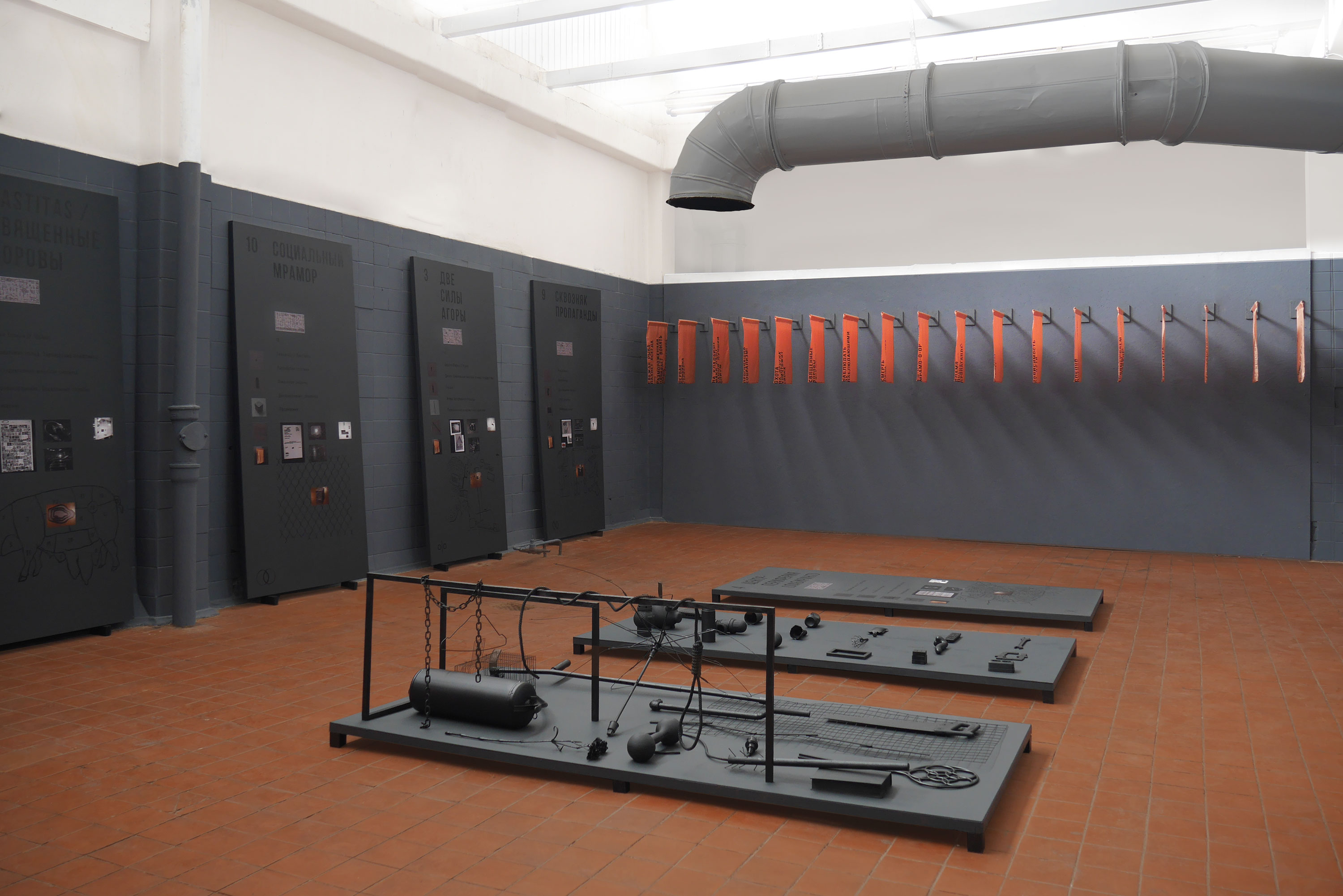
1. Posters for the exhibition
2. Iformational module
2. Iformational module
* Timeline of the events:
April 6 — monitoring commission by the district administration visits the gallery;
April 6 – the gallery is banned to host public events, the access to the gallery is forbidden;
April 8 – reciprocal measures and waiting for the permission to open Canteen XYZ gallery;
On May 17, the British embassy hanged a flag in support of the LGBT community of Belarus;
On May 19, the Interior Ministry publicly criticized this action and the LGBT community;
May 21, it became known that previous events directly affected the district administration, who insisted on closing the space.
A month later, the space was forever closed.
April 6 – the gallery is banned to host public events, the access to the gallery is forbidden;
April 8 – reciprocal measures and waiting for the permission to open Canteen XYZ gallery;
On May 17, the British embassy hanged a flag in support of the LGBT community of Belarus;
On May 19, the Interior Ministry publicly criticized this action and the LGBT community;
May 21, it became known that previous events directly affected the district administration, who insisted on closing the space.
A month later, the space was forever closed.
Informational boards
(18 parts of the archive):
(18 parts of the archive):


















Boards titles:
1. The Principle of the Initial Contract
2. Castitas / Holy Cows
3. Two Forces of Agora
4. Centre-Periphery (Labyrinth) 5. The Bones of the Power (A Chair on a Table)
6. De/Tumescence (A Spit of the Patriarchy)
7. Ultra-Ideology
8. A Glass to a Wall
9. Propaganda’s Draft of Wind
10. Social Marble
11. Rotten Socialism
12. The Columns of the Power (Hooves)
13. People’s Opium (Red Poppies)
14. The Zone of Extrusion (Alien)
15. Strained Strings
16. The Decay of the Liver
17. Crisis as a Chance (Fire)
18. Death/Rebirth
1. The Principle of the Initial Contract
2. Castitas / Holy Cows
3. Two Forces of Agora
4. Centre-Periphery (Labyrinth) 5. The Bones of the Power (A Chair on a Table)
6. De/Tumescence (A Spit of the Patriarchy)
7. Ultra-Ideology
8. A Glass to a Wall
9. Propaganda’s Draft of Wind
10. Social Marble
11. Rotten Socialism
12. The Columns of the Power (Hooves)
13. People’s Opium (Red Poppies)
14. The Zone of Extrusion (Alien)
15. Strained Strings
16. The Decay of the Liver
17. Crisis as a Chance (Fire)
18. Death/Rebirth
Additional text:
Sergey Shabohin’s personal project, Practices of Subordination methodically and meticulously analyses mechanisms of power. Since 2010, the artist has collected and documented stories about everyday events in Belarus, a testimony of deliberate, forceful interference of the state in the life of its citizens. Within his social circle and in the public space of Minsk capital city, Shabohin finds trivial, mundane objects and images which are a reminder of what happened or a reference to the ideological regime. The artist himself sees them as evidence of the ever-invigilating and punitory order. He organizes the collected materials – text documents, images, photos, objects – as an archive. From that, he builds a poignant narrative on state structures oppressive pressure on citizens in modern Belarus.
[…]
Keeping Belarus in mind and relying on local facts, in his project Sergey Shabohin analyses the nature of power in general. He recreates the line of human life – from birth and formation to death – and shows, how skilfully the external pressures infiltrate it, giving rise to fears and trauma. First inoculation, first clash with coercion structures and realization of propaganda influence – in retrospect, such moments are seen as pivotal. The artist records both important experiences of an abstract person, and his own experiences. In his archive, there is a note from a father, who helplessly admits his fear for his son. Sergey shows, how he himself tried awkwardly to imitate the practices of the authorities, trying to eavesdrop on his neighbours conversations using a glass pressed against the wall.
[…]
In his archive, Sergey Shabohin plays with classic image of a similar institution in 19th century, its strict classification by alphabet and subject matter. The collection of Practices of Subordination is founded and organized based on the object’s origin and keywords. However, this is where any parallels to a traditional archive end. In each specific place, Shabohin creates his own space for emotional experiences. In Bialystok, he displays his project in an unused space of Arsenal Gallery power station, which once housed the plant’s technical services. Tiny rooms with glass dividers, white tile walls, pipes, exhaust hoods, rows upon rows of electric wiring and a plethora of details purpose of which is difficult to discern today – all those were subordinated to the logic of the artist’s archive. The result is a somewhat temporary laboratory, with a special atmosphere of experiments conducted in there, and control. The individual is in juxtaposition with the oppressive character of overwhelming ideology. The artist leads the viewer through the labyrinth of human life – unstable, contradictory, and depending on external framework of mercy or despotism of authoritarian powers.
[…]
Practices of Subordination project definitely demonstrates Shabohin’s meticulous study of Michel Foucault’s concepts of power. However, from critics’ perspective, for the purpose of denoting Sergey Shabohin’s artistic and epistemological methods, another term borrowed from Foucaultasks to be used – “archaeology”. Shabohin does not reconstruct the past using physical resources an does not build a chronology of facts. He provides diverse fragments of personal life and daily life of the state and shows how certain formations of power and knowledge (or absence of knowledge) were able to emerge.
Practices of Subordination is a mutable space, in which both the artist and the viewer have the opportunity to reflect, generate knowledge and experience emotion.
Lena Prents
Fragments from the text
Sergey Shabohin: Archive-Museum-Laboratory,
prepared for the personal exhibition of Sergey Shabohin
Practices of Subordination in the Arsenal Gallery
(Białystok, 02.09 — 30.10.2016)
[…]
Keeping Belarus in mind and relying on local facts, in his project Sergey Shabohin analyses the nature of power in general. He recreates the line of human life – from birth and formation to death – and shows, how skilfully the external pressures infiltrate it, giving rise to fears and trauma. First inoculation, first clash with coercion structures and realization of propaganda influence – in retrospect, such moments are seen as pivotal. The artist records both important experiences of an abstract person, and his own experiences. In his archive, there is a note from a father, who helplessly admits his fear for his son. Sergey shows, how he himself tried awkwardly to imitate the practices of the authorities, trying to eavesdrop on his neighbours conversations using a glass pressed against the wall.
[…]
In his archive, Sergey Shabohin plays with classic image of a similar institution in 19th century, its strict classification by alphabet and subject matter. The collection of Practices of Subordination is founded and organized based on the object’s origin and keywords. However, this is where any parallels to a traditional archive end. In each specific place, Shabohin creates his own space for emotional experiences. In Bialystok, he displays his project in an unused space of Arsenal Gallery power station, which once housed the plant’s technical services. Tiny rooms with glass dividers, white tile walls, pipes, exhaust hoods, rows upon rows of electric wiring and a plethora of details purpose of which is difficult to discern today – all those were subordinated to the logic of the artist’s archive. The result is a somewhat temporary laboratory, with a special atmosphere of experiments conducted in there, and control. The individual is in juxtaposition with the oppressive character of overwhelming ideology. The artist leads the viewer through the labyrinth of human life – unstable, contradictory, and depending on external framework of mercy or despotism of authoritarian powers.
[…]
Practices of Subordination project definitely demonstrates Shabohin’s meticulous study of Michel Foucault’s concepts of power. However, from critics’ perspective, for the purpose of denoting Sergey Shabohin’s artistic and epistemological methods, another term borrowed from Foucaultasks to be used – “archaeology”. Shabohin does not reconstruct the past using physical resources an does not build a chronology of facts. He provides diverse fragments of personal life and daily life of the state and shows how certain formations of power and knowledge (or absence of knowledge) were able to emerge.
Practices of Subordination is a mutable space, in which both the artist and the viewer have the opportunity to reflect, generate knowledge and experience emotion.
Lena Prents
Fragments from the text
Sergey Shabohin: Archive-Museum-Laboratory,
prepared for the personal exhibition of Sergey Shabohin
Practices of Subordination in the Arsenal Gallery
(Białystok, 02.09 — 30.10.2016)
Photo documentation:
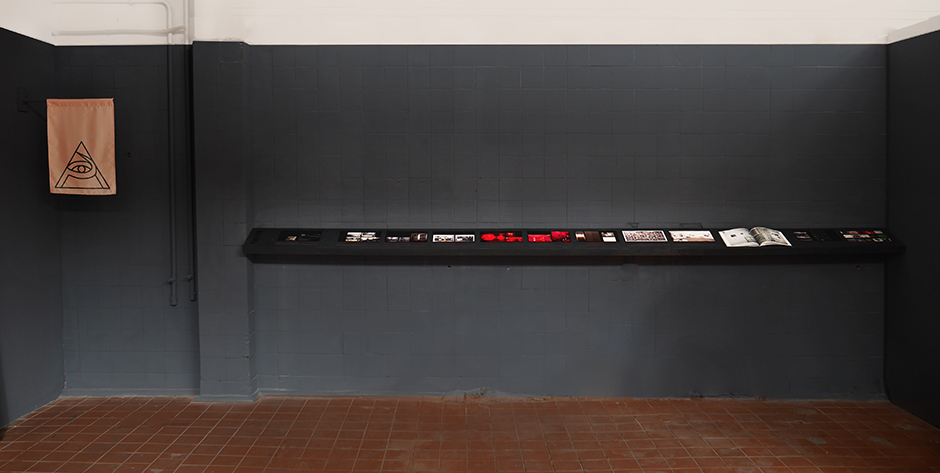


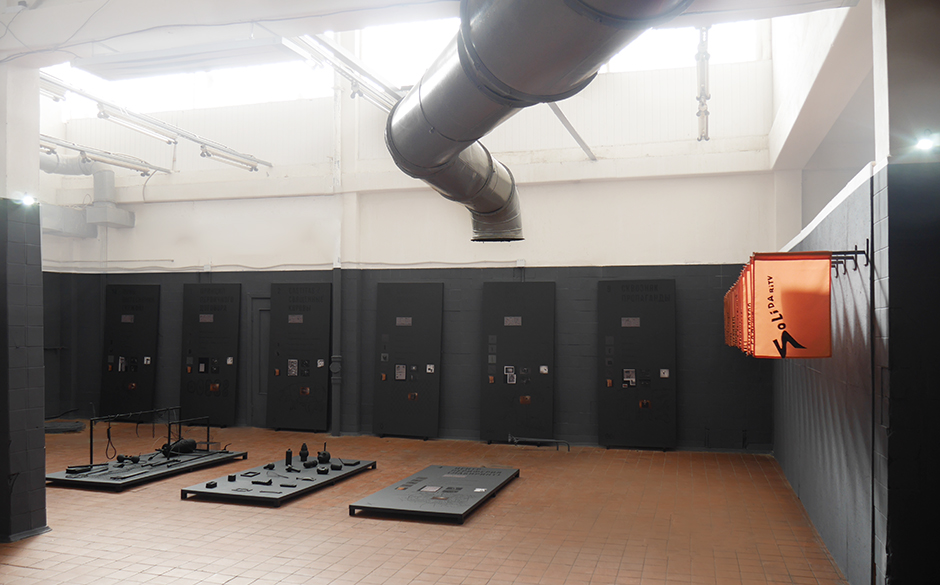

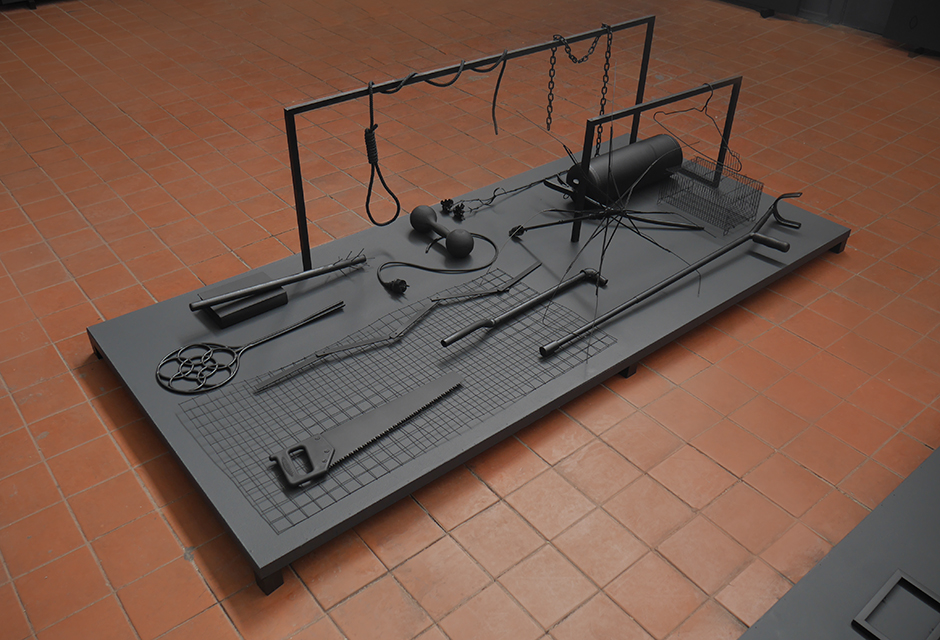
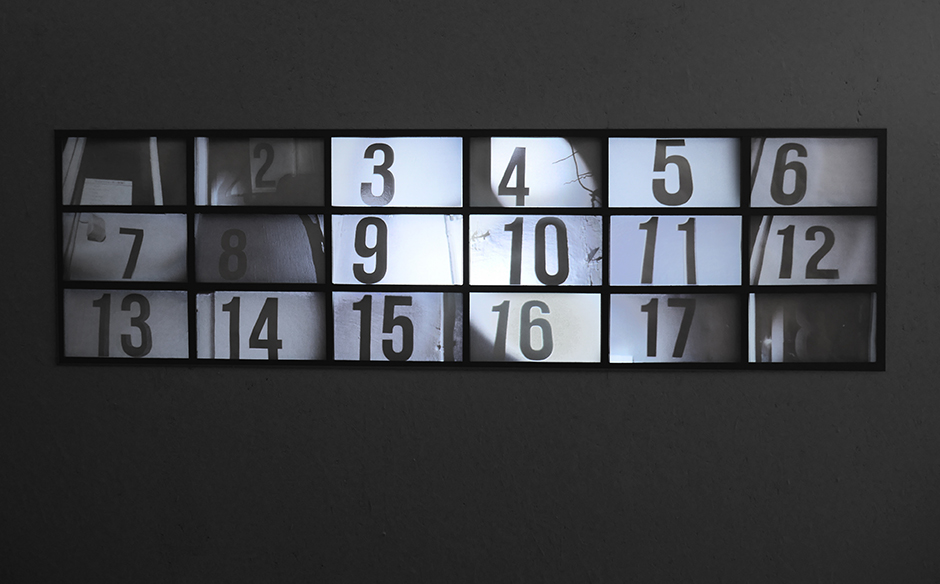

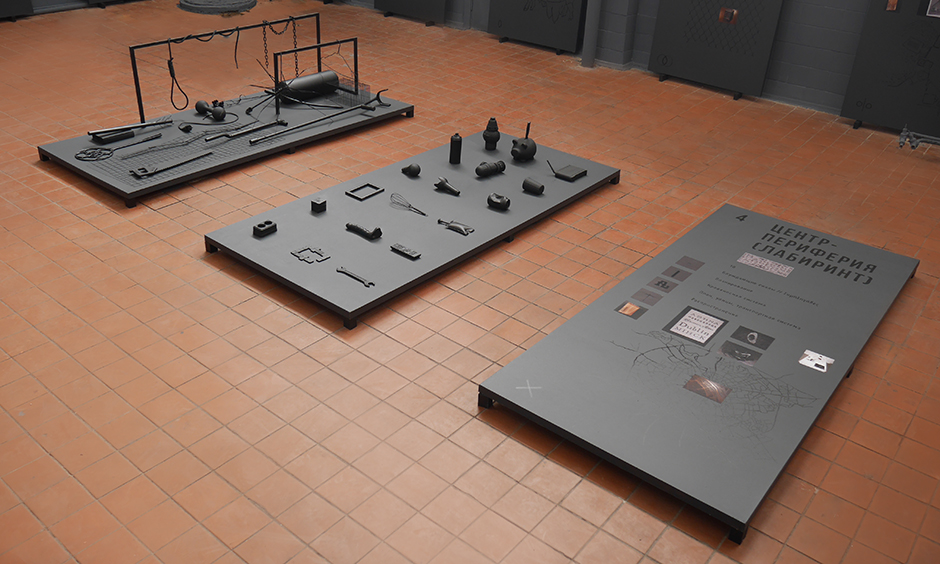


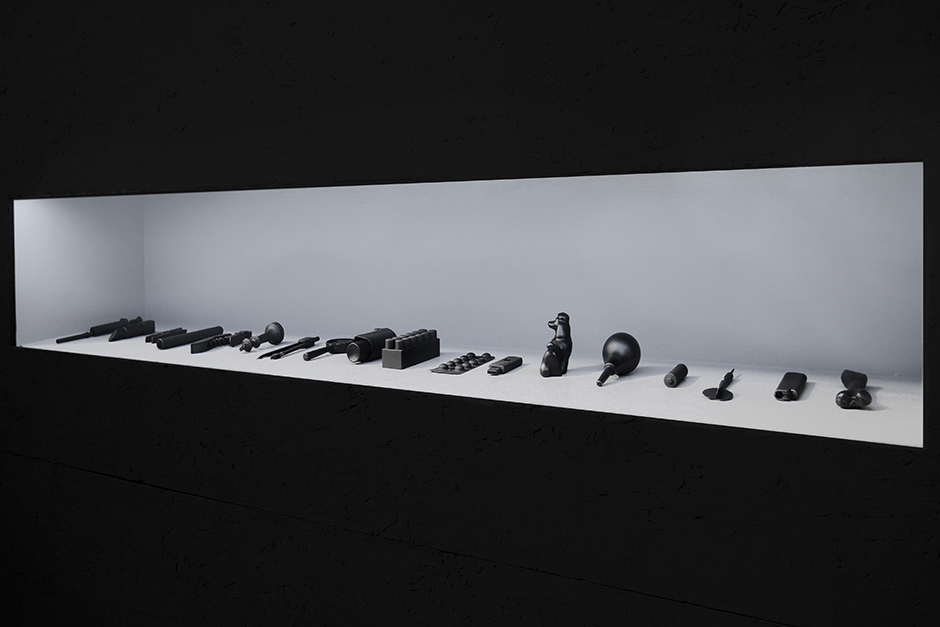
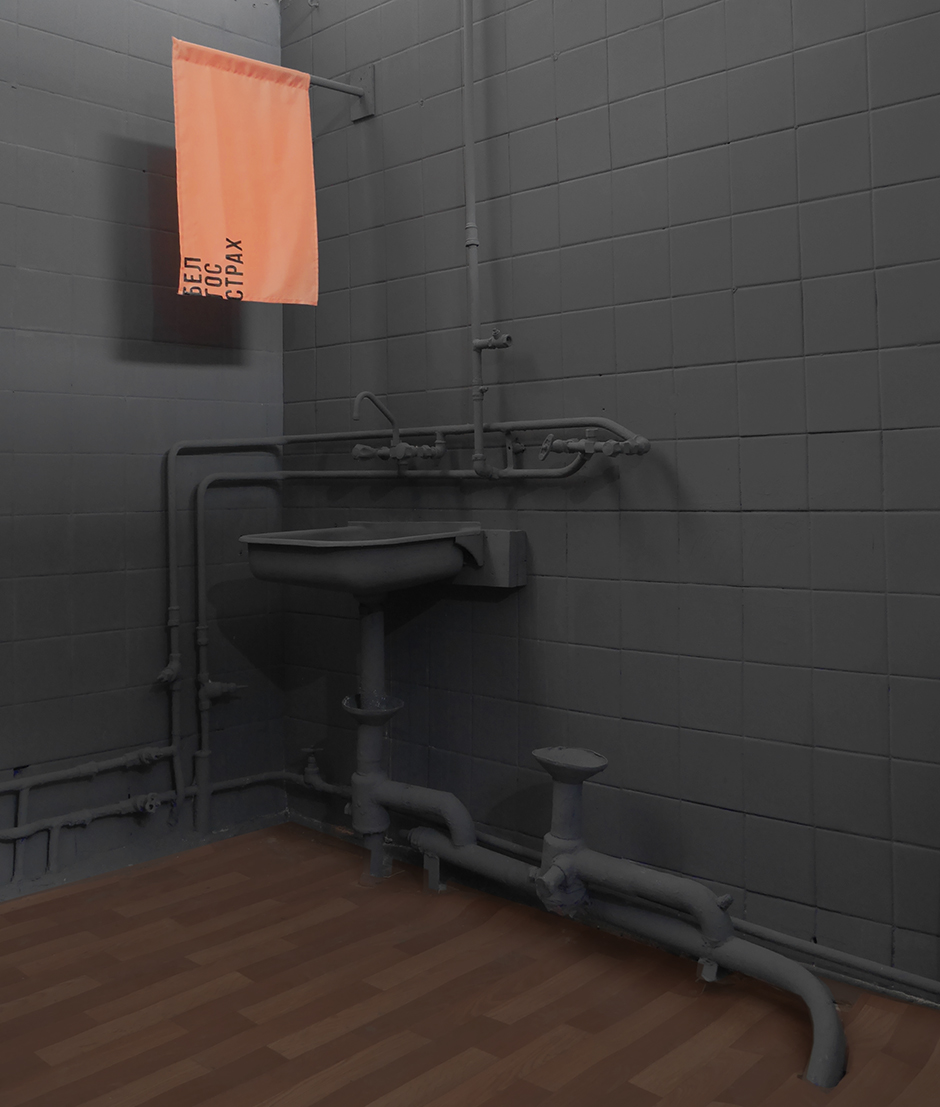

Photo documentation Sergey Shabohin ©
Translation into English: Anna Bredova
Translation into English: Anna Bredova